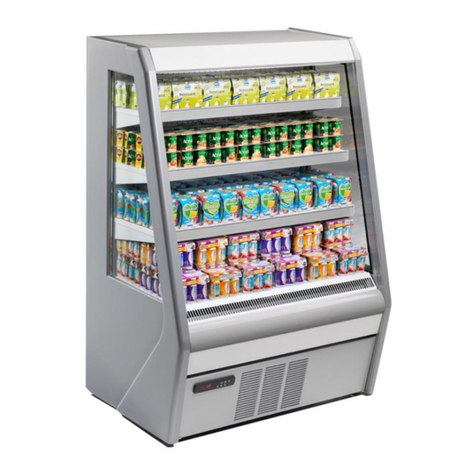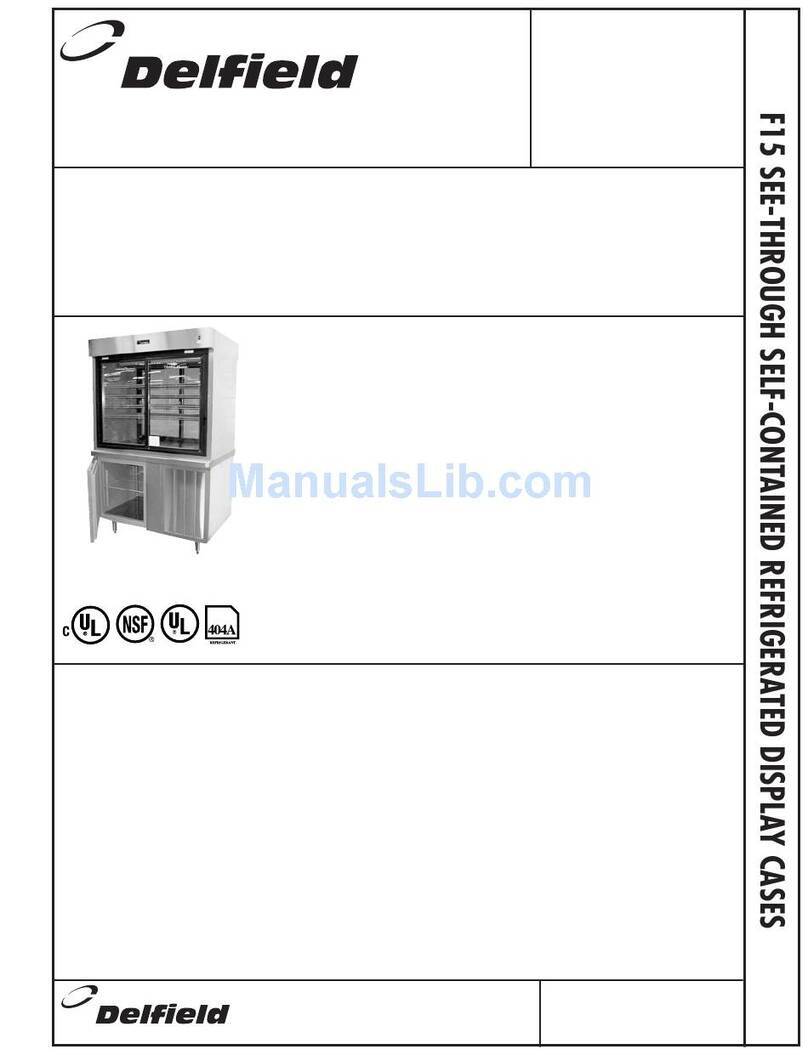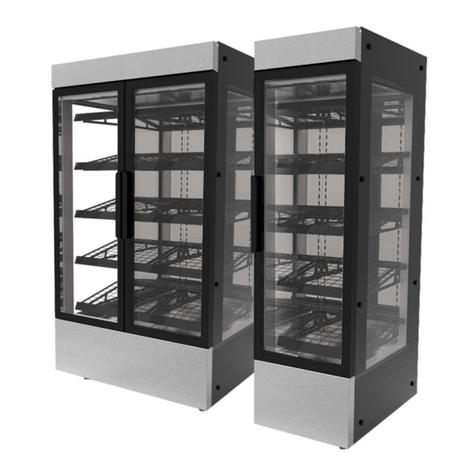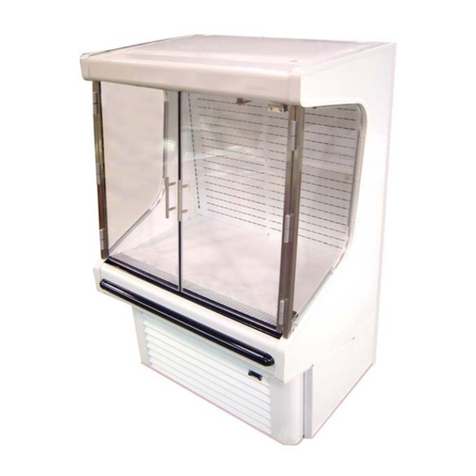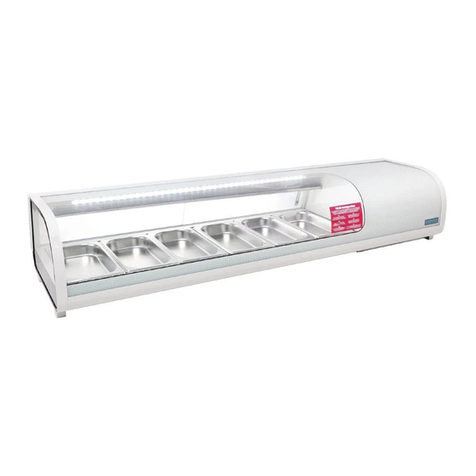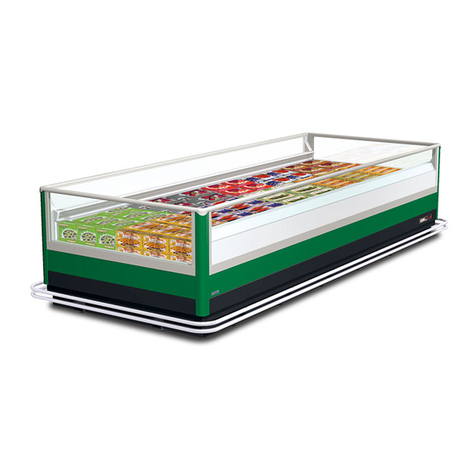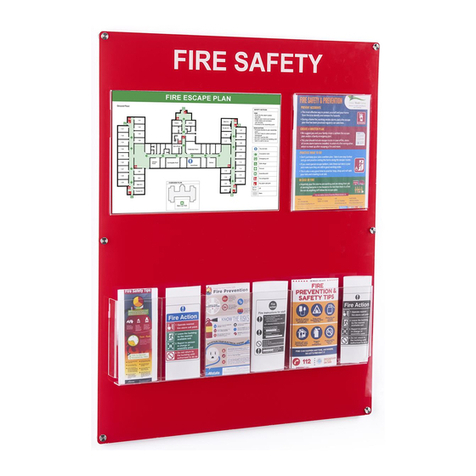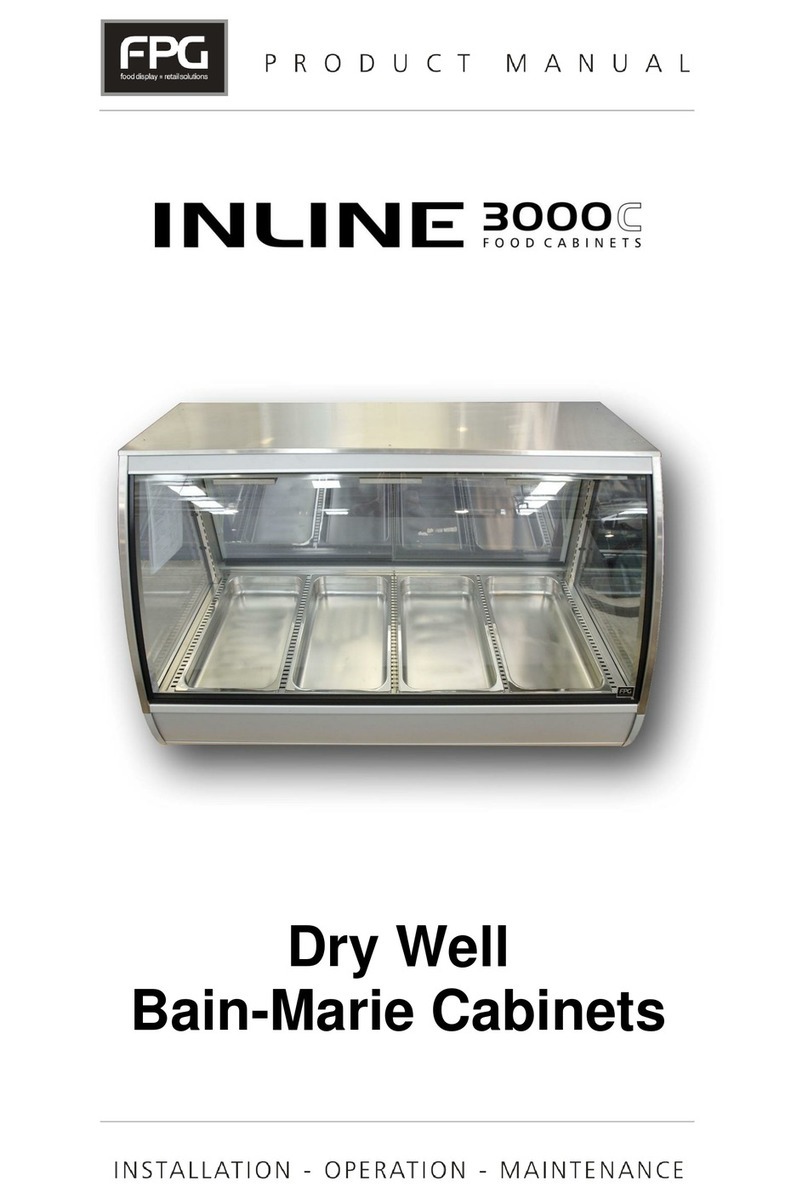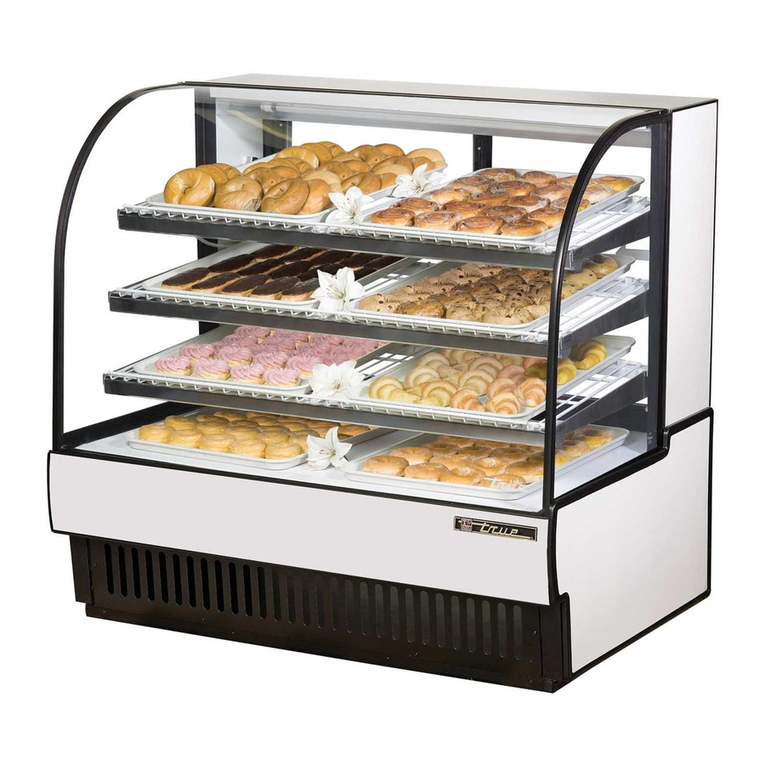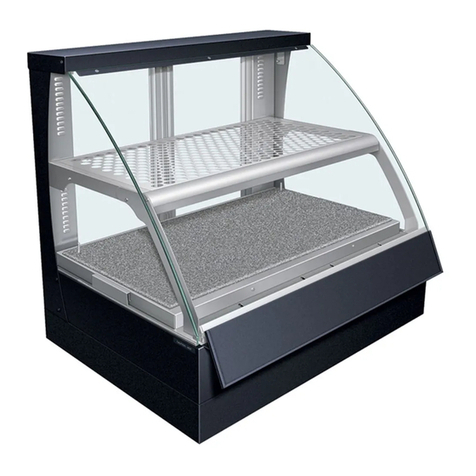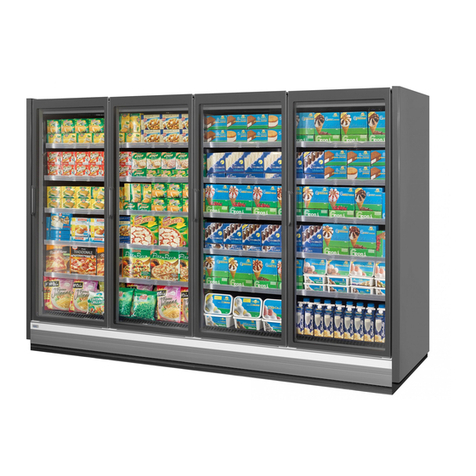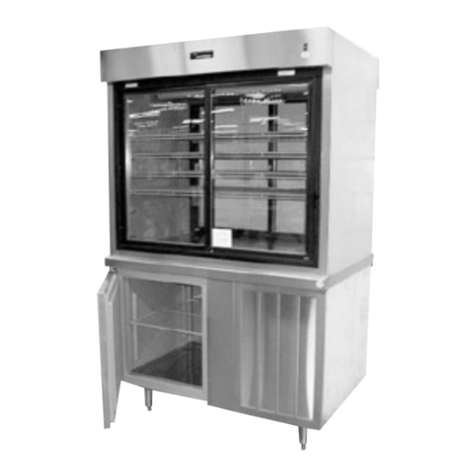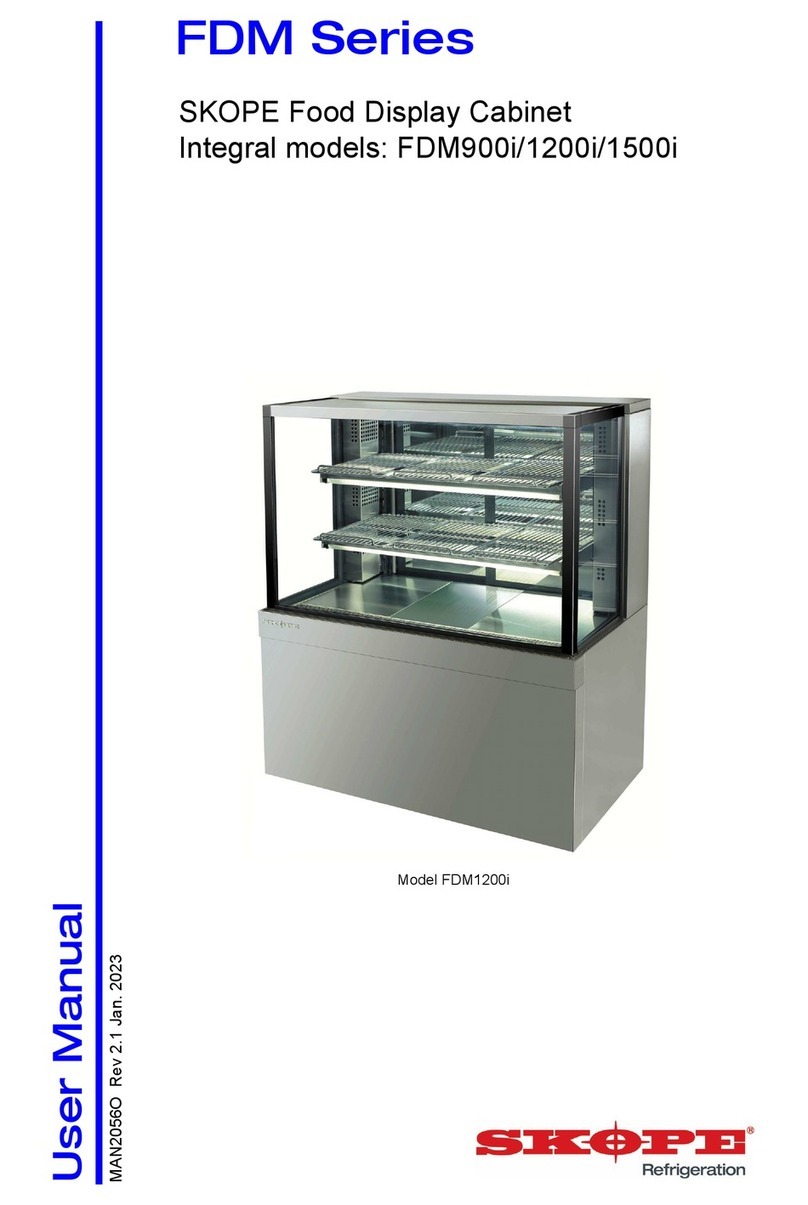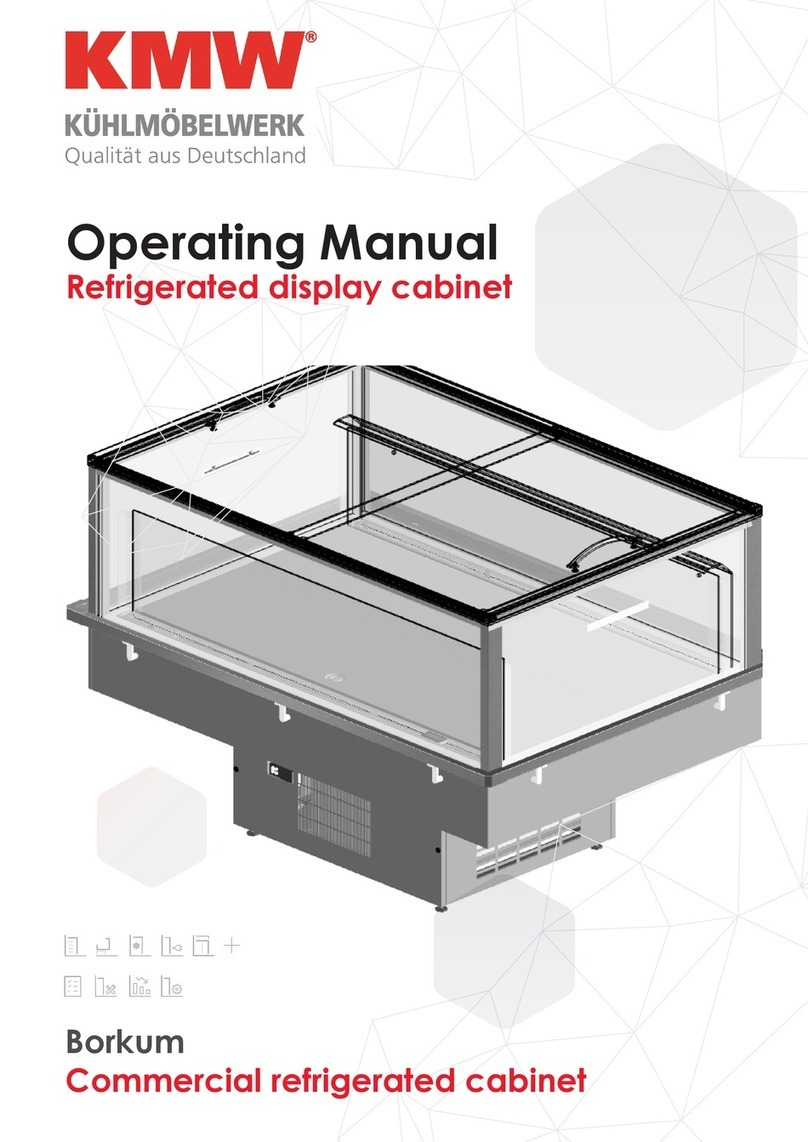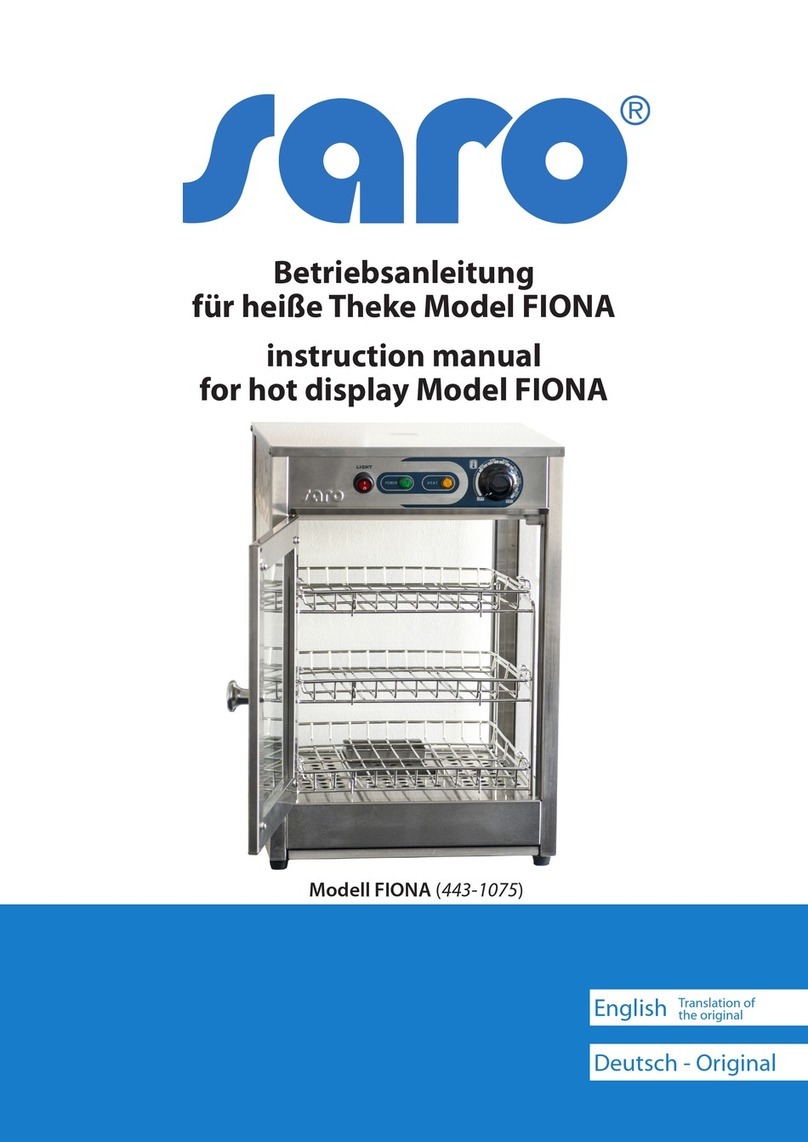Start-up
The appliance can be started for the first time 3 hours after it has been put into place. Connect the
appliance to mains power using a protective earth socket. The device should be powered from separate
low-voltage circuit equipped with protective cord and protected with fuse up to 10 A (shelves up to 16A).
Before connecting mains to the device check the local voltage is compatible with the appliance's
requirements (data on rating plate). Start the appliance using the switch. The temperature of the appliance
decreases and reaches the value set in the factory default settings. The products shall not be put into the
appliance before the default value is reached.
ATTENTION !!
1. It is not allowed to switch the device on without efficient equipotential switch system!!! The device is
equipped with protective PE cord.
2. Connecting the device to electrical network should be done in such a way that the plug is visible and
easily accessible for service. It is inadmissible to use extensions and branch-joints!!!
3. Before commencing any maintenance or cleaning activities, switch the device off, and then remove the
plug from power outlet.
Eventual repairs of electrical installation and replacement of power cord can be done only by certified
electrician.
2.4. Usage
General information
Proper storage of products in both the fridge and freezer compartments are of great importance for their
quality and freshness.
Destination
Fridges are designed for short-term storing of foiled food products, like: dairy and pork-butcher's
products, salads etc., as well as beverages and processed food. Freezer are designed for storing of food
products as above, previously frozen. Refrigeration level raisers are designed for dispensing and short-
term storing of various vegetable salads. The salads held in specially designed containers. The interior of
the level raiser and containers are made of food-contact acid-resistant steel. The device can be used in
groceries, bars, restaurants and gastronomic sites.
Proper operation
· After receiving the device, check its technical condition and equipment according to the
operating instruction; report possible damage to the seller within 24 hours.
· Level the device in the operating place, if it is wheeled, block the brakes.
· Maintain the device in good technical condition.
· Do not overload the device, i.e. watch the load to be compliant with technical data, watch the
admissible payload of shelves.
· Fill the refrigerating / freezing device interior after its initial cooling.
· Clean the device interior with water solution of dish washing liquid, using soft cloth or sponge,
previously switching offthe mains.
· Use only the equipment delivered with refrigerating device.
· In case of damage, disconnect mains and call service.
· The producer suggests training of the personnel operating the device in the range of device
operation, as well as in the range of basic issues of safety and hygiene of work.
· Connect the device to the mains network equipped with efficient equipotential switch system.
· The compartment that is intended for cold storage of products shall be filled with products
taken directly from a fridge compartment (+4 degrees).
· Fridge –Do not fill it with products taken directly from a freezer compartment.
· Do not keep the doors open if this is not necessary.
· Do not store rotten products.
· If necessary, dry the moisture that may appear on shelves or walls inside the appliance.
· Check the temperature every day.
· Fridge –Always store products in closed containers or wrapped in cling film. In this way you can
avoid ice building up or corrosion of the evaporator.
· Store products so that enough ventilation is provided.
